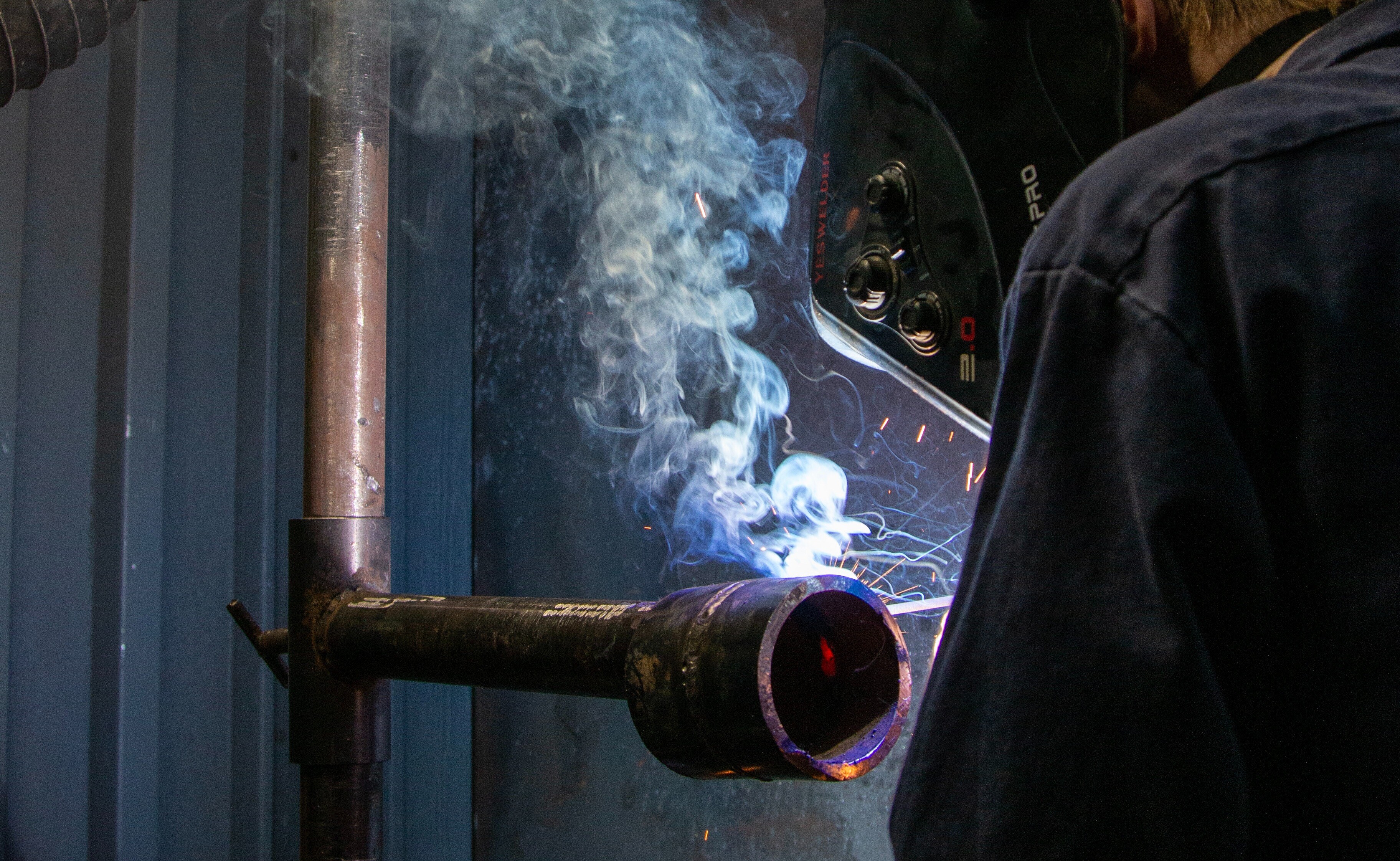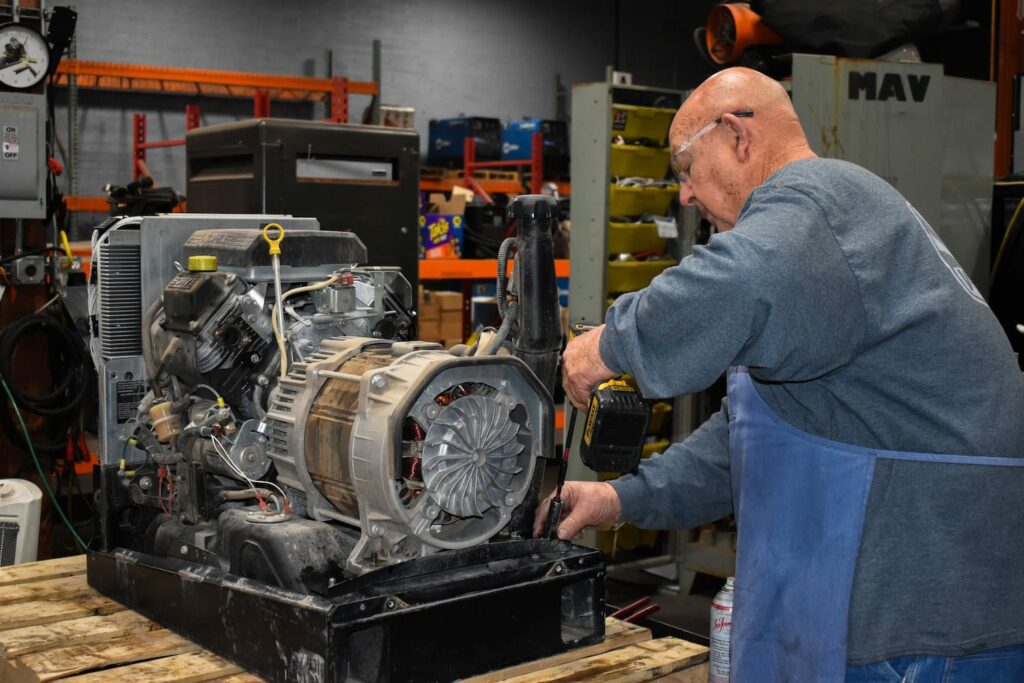Common Welding Repair Issues and Just How to Address Them Successfully
Welding repair work typically encounter a variety of issues that can threaten the honesty of the end product. Common problems consist of inadequate infiltration, porosity, and imbalance, amongst others. Each problem provides special difficulties that call for particular techniques for resolution. Recognizing these problems is vital for welders intending to enhance their end results and abilities. This discussion will certainly explore these typical welding fixing issues and reliable approaches to address them.
Inadequate Penetration
Poor penetration occurs when the weld metal falls short to totally fuse with the base material, leading to weak joints and prospective structural failures. This concern commonly originates from inadequate warmth input, wrong electrode angle, or incorrect welding rate. Welders may run into insufficient penetration as a result of a miscalculation of the essential parameters for a details material thickness or kind. In addition, contamination on the base material's surface can prevent efficient bonding, intensifying the trouble. To resolve inadequate penetration, welders should ensure suitable setups on their tools and preserve a tidy work surface. Normal inspection of welds is suggested to identify any kind of shortages early, enabling prompt adjustments and the avoidance of endangered structural stability in bonded assemblies.
Porosity
Porosity is a typical defect in welded joints that shows up as little gas bubbles entraped within the weld metal. This defect can jeopardize the integrity of the weld, causing reduced stamina and prospective failing under tension. Montana Mobile Welding and Repair. Porosity typically develops from contamination, moisture, or improper welding strategies, which enable gases to escape into the liquified weld pool. To deal with porosity, welders ought to guarantee appropriate surface preparation, maintain a clean functioning environment, and make use of appropriate welding parameters. In addition, picking the ideal filler material and securing gas can minimize gas entrapment. Normal assessment and screening of welds can assist recognize porosity early, guaranteeing prompt corrective actions are taken, consequently maintaining the top quality and integrity of the bonded structure
Imbalance
Imbalance in welding can occur from different elements, including incorrect configuration and thermal development. Recognizing the source is vital for effective resolution. Numerous modification methods are available to realign parts and assure structural stability.
Sources of Imbalance
Welding misalignment usually stems from a variety of underlying concerns that can endanger architectural stability. One primary reason is improper fit-up of components prior to welding, which can bring about voids and unequal surfaces. Variations in thermal expansion throughout the welding process can likewise lead to distortion, particularly if the materials being signed up with have different coefficients of development. Furthermore, inadequate fixturing and securing might fall short to hold components securely in area, resulting in activity throughout welding. Inadequately kept equipment, including welding equipments and tools, may introduce inconsistencies in the weld bead, more adding to misalignment. Operator error, stemming from insufficient training or experience, can also play a significant duty in creating misaligned welds.

Correction Techniques Available
Attending to misalignment properly requires a mix of corrective methods customized to the details problems handy. One common technique is using components or jigs to hold elements in the proper placement throughout welding, ensuring consistent positioning. Additionally, pre-heating the products can help in reducing distortion and enhance fit-up. For significant misalignment, mechanical adjustment strategies, such as utilizing hydraulic jacks or clamps, can be employed to fix the placement prior to welding. Post-weld warm therapy might additionally be necessary to relieve tensions created by imbalance. Ultimately, careful examination and adjustment during the arrangement phase can prevent imbalance problems from coming to be considerable troubles, promoting a smoother welding process and enhancing total architectural honesty.
Distortion
Distortion is a common challenge in welding that can develop from numerous variables, including uneven heating and air conditioning. Understanding the sources of distortion is crucial for applying efficient avoidance strategies. Resolving this concern not only enhances structural honesty yet likewise improves the overall top quality of the weld.
Root causes of Distortion
When based on the intense heat of welding, products frequently undergo changes that can bring about distortion. This sensation mostly occurs from thermal growth and contraction during the welding process. As the weld location warms up, the material broadens; upon air conditioning, it gets, which can create interior stress and anxieties. Furthermore, uneven heating throughout a work surface can aggravate these stress and anxieties, resulting in bending or bending. The sort of product likewise plays a considerable duty; steels with differing thermal conductivity and coefficients of expansion might respond in different ways, bring about unforeseeable distortions. Bad joint layout and insufficient fixturing can contribute to misalignment throughout welding, enhancing the chance of distortion. Understanding these causes is essential for reliable welding repair work and avoidance techniques.
Prevention Techniques
Effective prevention methods for distortion throughout welding concentrate on regulating warm input and ensuring correct joint layout. Preserving a consistent warmth input aids to decrease thermal development and contraction, which can bring about distortion. Making use of strategies such as preheating the work surface can additionally decrease the temperature slope, promoting uniform home heating. Additionally, choosing ideal joint designs, such as T-joints or lap joints, can improve security and minimize anxiety focus. Executing proper fixturing to secure the workpieces in position even more help in preserving alignment throughout the welding procedure. Staggered welding sequences can disperse warm much more equally, stopping local distortion. By using these strategies, welders can substantially lower the chance of distortion and boost the overall top quality of their welds.
Cracking
Fracturing is an usual problem encountered in welding repairs, commonly arising from various variables such as improper air conditioning prices, material selection, or insufficient joint prep work. The event of cracks can significantly jeopardize the integrity of the weld, resulting in potential failings during operation. To address this concern, welders must first analyze the origin triggers, ensuring that materials are suitable and suitably selected for the specific application. Additionally, controlling the cooling price during the welding process is vital; quick cooling can generate anxiety and lead to fracturing. Proper joint style and prep work also add to minimizing the threat. Applying these approaches can enhance weld top quality and toughness, inevitably minimizing the probability of fracturing in finished weldments.

Incomplete Combination
A significant cswip 3.1 concern in welding repair services is insufficient blend, which takes place when the weld steel does not adequately bond with the base material or previous weld passes - Montana Mobile Welding and Repair Belgrade. This defect can bring about weaknesses in the joint, possibly jeopardizing the honesty of the bonded structure. Aspects adding to incomplete combination include inadequate warm input, inappropriate welding strategy, and contamination of the surfaces being joined. To resolve this issue successfully, welders need to guarantee appropriate pre-weld cleansing and surface area prep work, as well as readjust their welding specifications to attain appropriate infiltration and fusion. Regular assessment throughout the welding process can additionally help recognize incomplete fusion early, permitting for timely rehabilitative procedures to enhance the general top quality of the weld
Overheating
While welding repair work can improve structural integrity, overheating presents a considerable obstacle that can bring about product deterioration. Excessive heat throughout welding can alter the mechanical properties of steels, leading to minimized stamina, increased brittleness, and warping. This sensation is particularly essential in high-stress applications where architectural dependability is critical. Recognizing getting too hot can include aesthetic inspections for discoloration or distortion, as well as keeping an eye on temperature level throughout the welding process. To reduce the threats related to getting too hot, welders need to use suitable methods, such as regulating warmth input, readjusting traveling speed, and using suitable filler products. Furthermore, implementing pre- and post-weld heat therapies can assist bring back product homes and boost the general top quality of the repair, ensuring long-lasting performance and security.
Regularly Asked Inquiries
What Are the Common Signs of a Welding Flaw?

How Can I Test My Welds for Top quality?
To check welds for top quality, one can make use of click aesthetic evaluations, ultrasonic testing, and radiographic approaches. Each strategy ensures structural stability, recognizes problems, and verifies adherence to specified criteria, inevitably boosting the integrity of the welded joints.
What Safety and security Safety Measures Should I Take While Welding?
When welding, one ought to prioritize safety by putting on appropriate individual safety devices, guaranteeing correct ventilation, securing flammable products away, maintaining a clean work area, and knowing environments to stop mishaps and injuries.
Can I Repair a Weld Without Renovating the Entire Joint?
Fixing a weld without renovating the whole joint is feasible, relying on the damage (Belgrade Fabrication). Methods combo welder such as grinding, including filler product, or making use of a welding procedure can effectively address certain problems while preserving the surrounding framework
What Equipment Are Essential for Efficient Welding Fixes?
Essential tools for reliable welding repairs consist of a welding maker, cord brush, mill, safety equipment, clamps, and filler products. Each device plays a vital role in ensuring top quality and safety during the repair service process. Porosity commonly arises from contamination, dampness, or improper welding strategies, which permit gases to get away right into the liquified weld pool. Inadequately maintained devices, consisting of welding machines and devices, might introduce inconsistencies in the weld bead, more adding to misalignment. When subjected to the extreme warmth of welding, materials frequently undergo changes that can lead to distortion. Cracking is a common problem encountered in welding repair work, typically resulting from different variables such as incorrect cooling prices, material choice, or inadequate joint preparation. A substantial problem in welding repair services is insufficient blend, which occurs when the weld metal does not appropriately bond with the base material or previous weld passes.